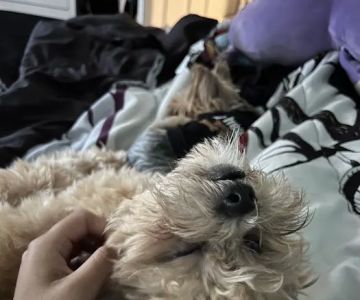How to Socialize a Puppy with Other Dogs
When I first brought home my puppy, I knew socializing him with other dogs was one of the most important things I could do for his development. As a dog owner, I quickly realized that a well-socialized dog is not only happier but also more confident and well-behaved. However, socializing a puppy with other dogs can be a daunting task, especially if you're new to the world of dog ownership. Over time, I learned some key steps and strategies that helped me successfully socialize my puppy with other dogs, and I’m excited to share those with you.
1. Why Is Socialization Important?
Socializing a puppy isn’t just about letting them play with other dogs. Proper socialization is essential for a puppy’s mental, emotional, and behavioral development. When puppies are exposed to other dogs, they learn vital communication skills, like understanding body language and social cues. It also reduces the likelihood of developing fear-based behaviors, such as aggression or anxiety, towards other animals. A well-socialized puppy grows into a confident adult dog who can interact calmly and politely with other dogs and humans alike.
2. The Best Time to Start Socializing Your Puppy
As a general rule, the best time to start socializing your puppy is between the ages of 3 to 14 weeks. During this critical period, puppies are especially receptive to new experiences. However, it’s never too late to start. Even older puppies and adult dogs can learn to socialize, although the process may take more time and patience. My puppy, for example, was introduced to other dogs early on, but I continued to expose him to different dogs and environments as he grew, reinforcing his social skills and preventing any fear from developing.
3. How to Introduce Your Puppy to Other Dogs
When you’re ready to begin socializing your puppy with other dogs, it’s crucial to make the experience as positive and calm as possible. Here’s a step-by-step approach I followed that worked wonders:
- Start Slow: Begin with calm, controlled introductions. I recommend starting with one dog at a time. Look for a dog who is well-behaved and has a calm demeanor. A hyperactive dog can overwhelm your puppy and make the experience stressful.
- Leash the Dogs: Keep both dogs on a leash for the initial meeting. This allows you to maintain control and stop any unwanted behaviors before they escalate. Avoid using tight leashes, which can make your puppy feel tense.
- Observe Body Language: Watch both dogs closely. Signs of stress or aggression include stiff body posture, growling, or direct staring. If either dog shows these signs, separate them and try again later. Positive body language, like wagging tails and relaxed faces, indicates that both dogs are comfortable.
- Allow Playtime: Once both dogs seem relaxed, allow them to interact more freely. My puppy loved to chase and be chased, which helped him burn off energy and build confidence in a positive environment.
4. Socialization in Safe and Controlled Environments
Not all environments are ideal for puppy socialization. I quickly realized that dog parks can be overwhelming for puppies due to the large number of dogs and varying levels of behavior. Instead, I chose quieter, less crowded places for the first few socializing sessions. Here are some environments where I found successful interactions for my puppy:
- Controlled Dog Meetups: Some pet stores, training schools, and veterinarians host puppy playdates or socialization classes. These environments are usually safe and controlled, making it easier for puppies to interact with other dogs in a calm setting.
- Friends’ Dogs: Introducing your puppy to a well-behaved dog from a friend or family member is a great way to start. This way, you can observe how both dogs interact before allowing them to play together.
- Training Classes: Puppy kindergarten or obedience classes can be a great way to socialize your puppy with other dogs while also teaching essential commands. This will help ensure that your puppy understands how to behave in the presence of other dogs.
5. Positive Reinforcement for Success
Throughout the socialization process, it’s essential to use positive reinforcement. Every time your puppy interacts with another dog in a positive way, reward them with praise, treats, or their favorite toy. I found that giving my puppy a treat after calm interactions with other dogs helped him associate the experience with something rewarding. This positive reinforcement solidifies the behavior and encourages your puppy to continue interacting well with other dogs.
6. Dealing with Fear or Aggression
It’s not uncommon for puppies to show signs of fear or aggression during the socialization process, especially if they have not had many positive interactions with other dogs early on. If your puppy is fearful or aggressive, don’t worry—this can be worked through with patience and consistency. I recall a moment when my puppy was overly shy around larger dogs. We slowly introduced him to calm, smaller dogs first and then gradually worked up to bigger dogs. It took time, but eventually, he became more comfortable.
- For Fearful Puppies: Start with calm, well-behaved dogs and give your puppy plenty of time to get used to their presence. Always stop the interaction if your puppy seems overly stressed and try again later.
- For Aggressive Puppies: It’s essential to address the aggression early. If your puppy displays aggression, seek the guidance of a professional trainer who can help address the behavior safely and effectively.
7. Socializing with Different Types of Dogs
Socializing your puppy with a variety of dogs is important for broadening their comfort zone. My puppy has been exposed to dogs of all sizes, breeds, and temperaments. Doing so not only makes him more adaptable but also teaches him how to interact respectfully with dogs that may be different from him. Here are some types of dogs to introduce your puppy to:
- Different Breeds: Socializing with dogs of various breeds will help your puppy adapt to different body sizes, personalities, and energy levels.
- Older and Calm Dogs: Older, calmer dogs are often great role models for younger puppies. They can teach your puppy good behavior and proper dog-to-dog etiquette.
- High-Energy Dogs: While it’s important to expose your puppy to dogs of all temperaments, high-energy dogs can teach them how to handle excitement and playfulness in a controlled environment.











